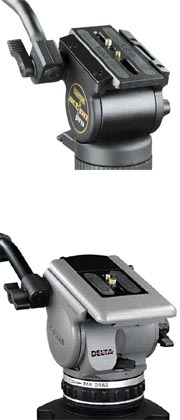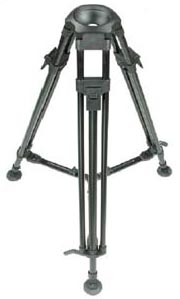How to Choose a Tripod
 Try not to penny-pinch and compromise too much with your tripod. In many cases a good tripod will outlive your camera and will be an important long-term investment. This page explains the main things to look for.
Try not to penny-pinch and compromise too much with your tripod. In many cases a good tripod will outlive your camera and will be an important long-term investment. This page explains the main things to look for.
Separate Head and Legs
Good tripods invariably consist of legs with a detachable head. Most consumer tripods come already paired up as a single unit but manufacturers of professional tripods usually sell the items separately. This is partly so you can mix and match the exact systems you want and partly because legs often need replacing before the heads.
The Head
Most heads are fluid heads which use an internal fluid to create a dampening effect known as drag, resistance or tension (more on that later). Cheap heads may have limited or no control over the amount of drag. Good heads have finer control and allow you to set the drag for tilting and panning separately. The more control you have the better.
Check for any "play" in the head. When you begin a movement the head should start moving smoothly, with no jerkiness or inconsistencies in the drag.
Good tripods have counterbalance systems to help keep the camera balanced. If you have a large or unevenly balanced camera you will appreciate the option to position the camera further forwards or backwards on the head. Another counterbalancing feature includes a system of springs which provide increasing vertical resistance as you tilt up and down — this gently pushes the camera back towards a horizontal position. It's hard to describe why this is useful but it's certainly a nice feature to have.
One more thing — unless your camera and tripod is a permanent installation, a quick-release mechanism is essential. This allows you to quickly remove the camera from the tripod and begin shooting hand-held. It usually means that a small attachment is permanently screwed to the camera and clicks into the tripod head (in the illustration above it's the small black plate in the middle of the head). When choosing a tripod, make sure that this attachment won't get in the way if it's always attached to your camera.

The Legs
Obviously the legs must be sturdy enough to hold the weight of the camera. If there's a chance that you will add any peripherals at a later date (e.g. audio equipment, bigger lens, etc) the tripod should be able to accommodate them as well.
Check the height range — the lowest and highest points the tripod can be set to. It's good to have a tripod which can go at least a little bit higher than your normal eye level.
The weight is important if you plan to move around. Good-quality legs are generally heavier, but modern tripods often use composite materials such as carbon fibre to reduce weight significantly.
Finally, check how easy the tripod is to set up. You want to be able to set up and pack down quickly.
Travel Case
Tripods can take a battering in transit. It makes sense to have a carry-case to protect your investment, preferably a hard case.
Next Page: Setting Up the Tripod